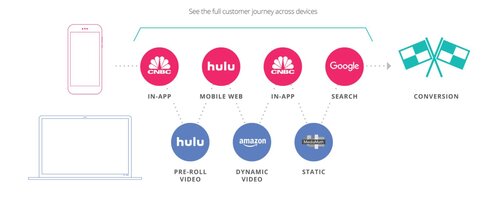


FTrack is a cookieless tracking technology that uses probabilistic device recognition to derive a privacy-friendly persistent ID for each device. FTrack ingests more than 30 non-PII signals (e.g. browser-based, device-based and network-based) and employs machine learning algorithms to assign a unique FTrack ID to each device. Flashtalking acquired the FTrack technology in 2015 and has since continued to improve its scale and accuracy.
While FTrack is never exposed for use in the bid stream to purchase media, FTrack does provide advertisers with persistent identities for measurement and personalization. Today, 120 global brands use FTrack. The net result is that Flashtalking has accumulated what is arguably the largest cookieless footprint in the industry. As cookies and MAIDs go away, very little changes for Flashtalking’s advertisers—we already have GDPR-compliant, privacy-friendly cookieless IDs in place to safeguard their digital marketing campaigns.

Is FTrack considered fingerprinting?
Google defines fingerprinting on its Ads & Commerce Blog as follows:
Anti-fingerprinting
An important goal of the Privacy Sandbox is developing technology to protect people from opaque or hidden techniques that share data about individual users and allow them to be tracked in a covert manner. One such tactic involves using a device’s IP address to try and identify someone without their knowledge or ability to opt out.
Chrome recently published a new proposal, Gnatcatcher, for how someone’s IP address might be masked to protect that person’s identity without interfering with a website’s normal operations. This proposal will continue to be refined based on feedback from the web community.
FTrack operates in strict compliance with Google’s definition:
Flashtalking does not share or sell consumer data; that is not our business model.
FTrack does not access PII or sensitive information.
Flashtalking provides consumers with notification and choice on every impression served with FTrack (as will be discussed in our next blog).
Is FTrack durable?
Durability is a function of two variables: having continued access to the data signals used in the modeling and maintaining accuracy despite changes to those signals.
As an independent, MRC accredited ad server, Flashtalking requires foundational data signals to properly render content and perform verification. At the same time, we do not participate in the types of activities that most concern privacy advocates (i.e. profiling consumers, building audience segments, and/or monetizing consumer data).
The FTrack algorithm is also extremely resilient to changes in data signals. Despite seeing a deprecation of signals since Apple introduced ITP in 2017, FTrack’s broad adoption and maturity of the models gives Flashtalking the global scale with which to maintain a high degree of model resolution and accuracy. Furthermore, as new IDs start to proliferate, they will serve as new incremental signals for our models.
In case you missed it, read the last blog post in this series, Part 4: Flashtalking’s Identity Framework.
In our next blog post, we will discuss the second building block of the Flashtalking Identity Framework: the Privacy Icon.







